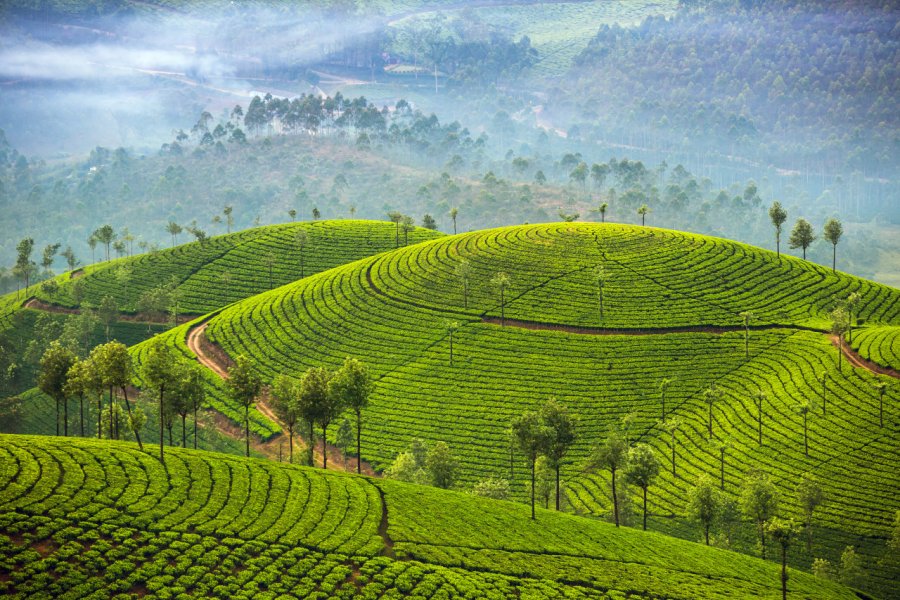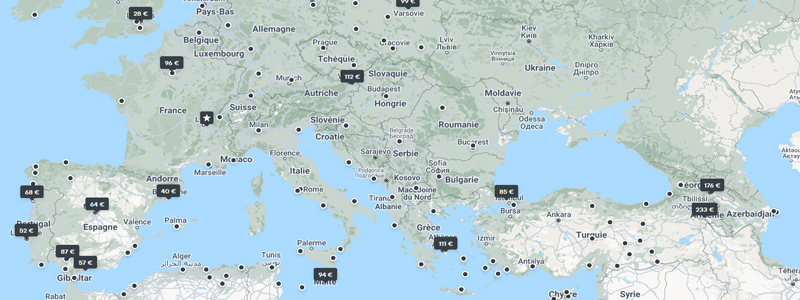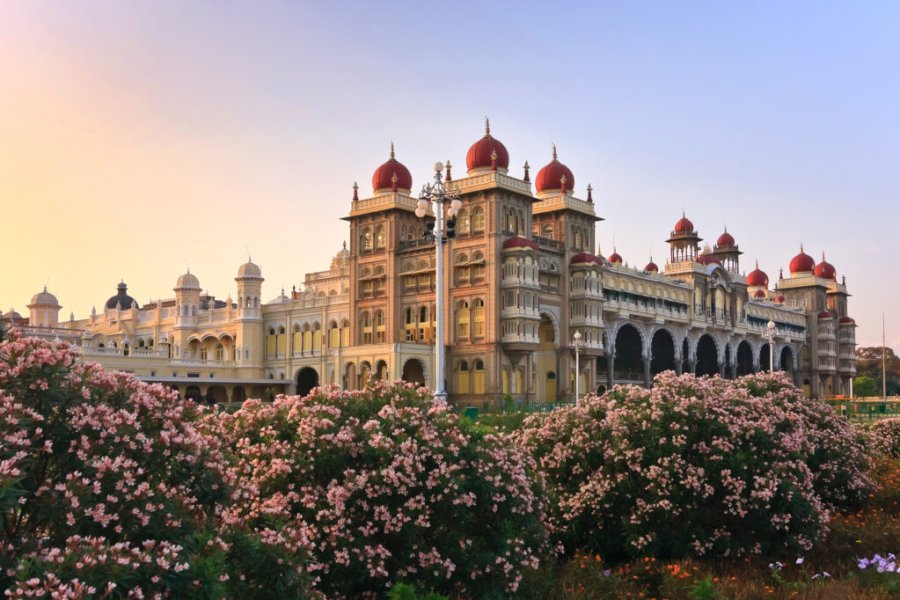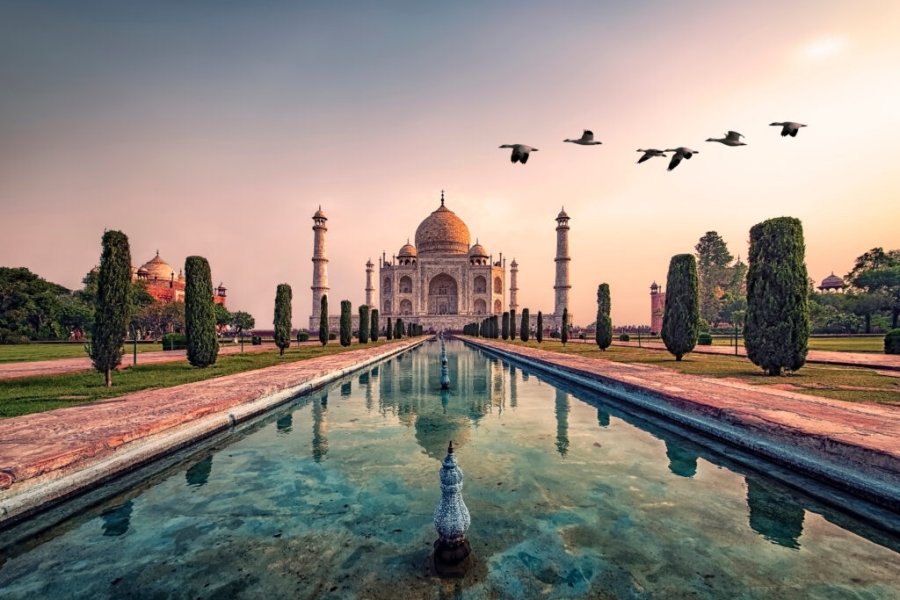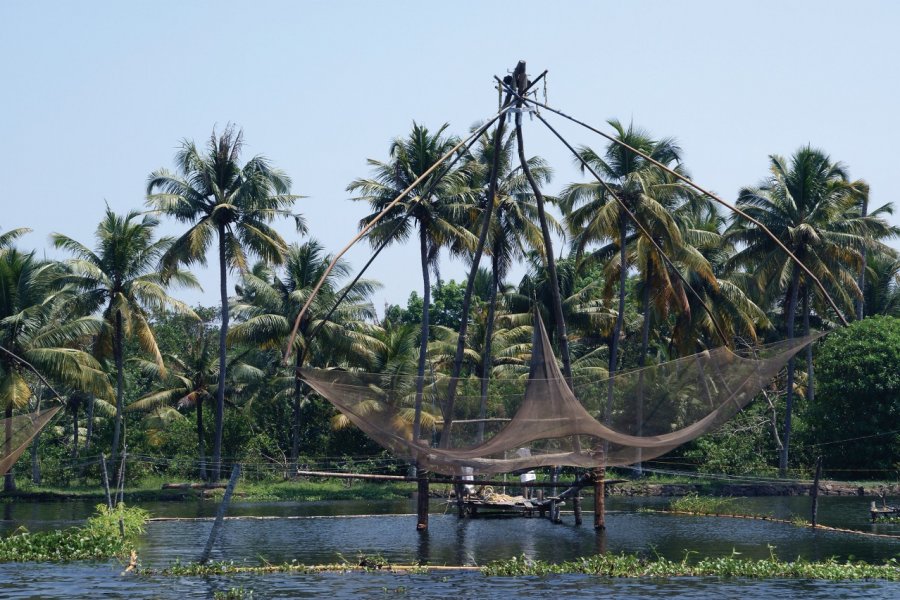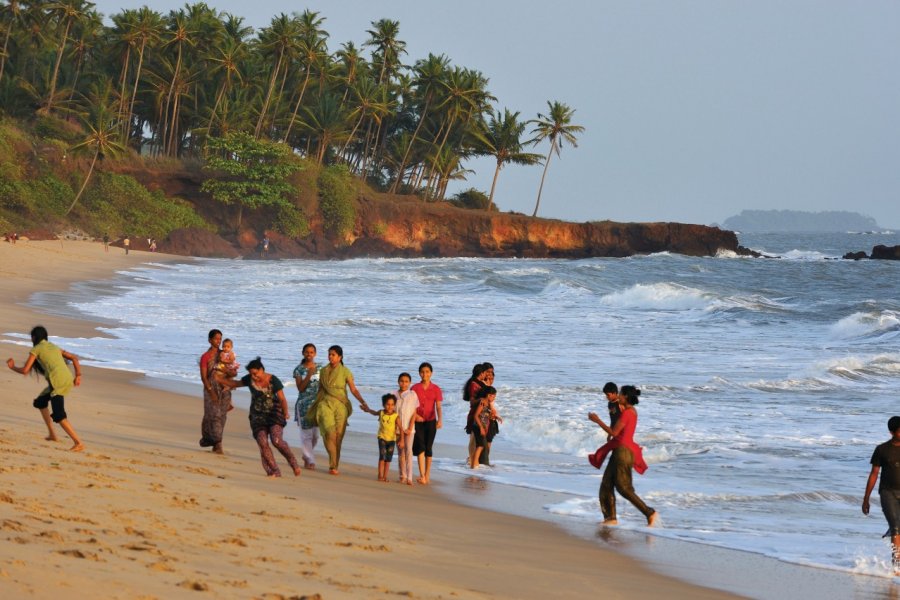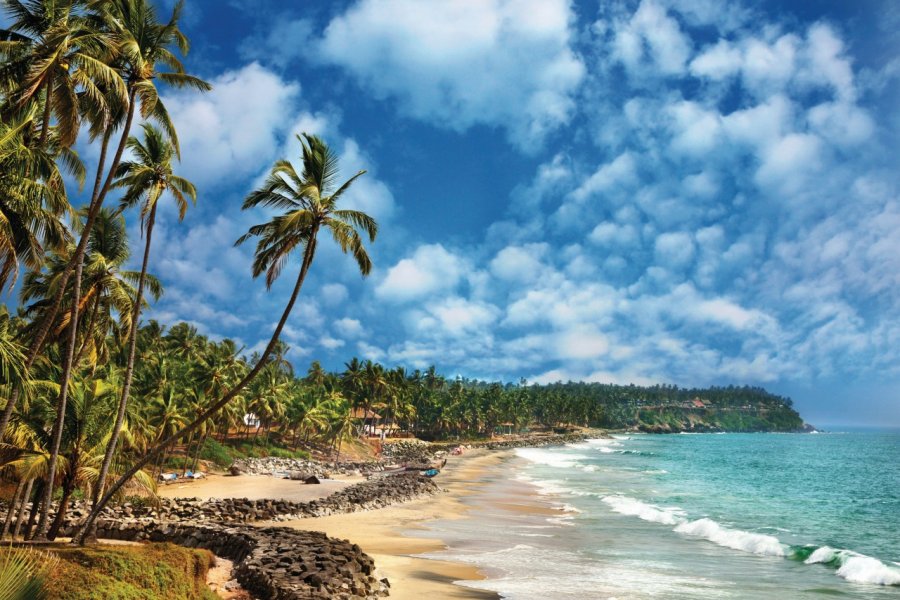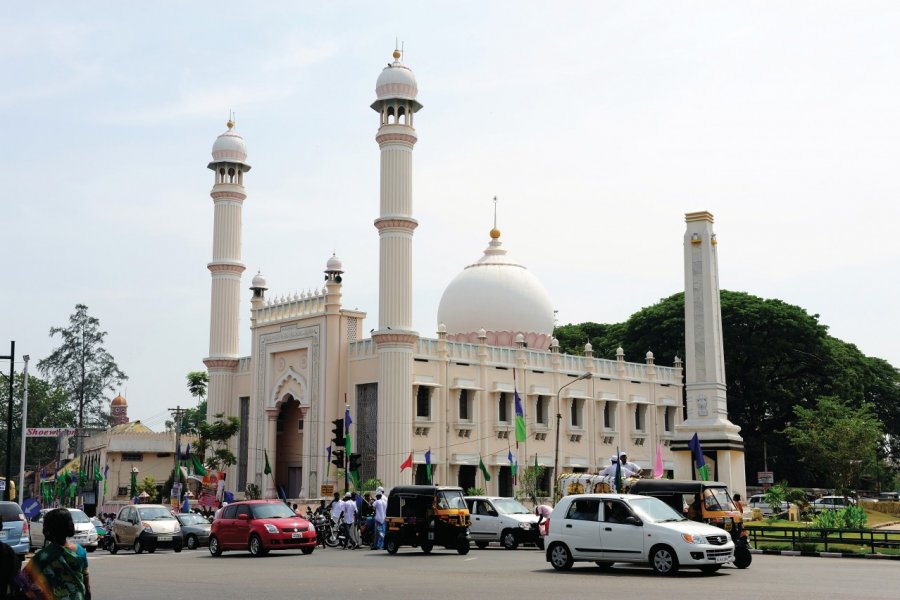Travel guide Kerala
It is at the extreme southwest of the Indian subcontinent, separated from the rest of the country by the majestic mountain range of the Western Ghats, that Kerala, "land of God" as its inhabitants call it, spreads its splendid landscapes made of a myriad of canals and lagoons, superb beaches overlooking the sea of the Laquedives and tropical forests. Beyond its exuberant nature, Kerala is home to an impressive and unique cultural heritage: a subtle cuisine, a protean architecture inherited from Jews, Muslims, Dutch and Portuguese who once traded in spices by sea, unique traditions such as theyyam (ritual art close to trance), kathakali (traditional dance theatre) or the ancient martial art called kalarippayatt, still practiced in Calicut.... The tourist guide of Kerala will make you discover an India far from the clichés, the tourist infrastructures are very well developed, and will allow you to cross its lands and waters, sometimes on board a houseboat, rocked by the backwaters, sometimes in the bunks of a train as old as magnificent running towards the cosmopolitan Fort Cochin. And what about these tea plantations of Munnar, running infinitely towards the horizon, without forgetting the cliff of Varkala or the beach of Kovalam... Namaskaram!
What to see, what to do Kerala?
-
Book an activity
-
Customized travel
- The most beautiful cities Kerala
When to go Kerala ?
When to go to Kerala? The best time to visit Kerala is from October to March, and the two best months to visit this southern part of India are January and February. As with all popular seasonal destinations, there are disadvantages to coming to India during the peak tourist months: tourists flock to Kovalam and Varkala for example. Hotels also inflate their prices during these periods, so one may prefer to come during the off-season (April, September, October and March), when it is less crowded and prices are negotiable again. The monsoon floods Kerala between June and September. Some areas are at their most beautiful during the monsoon (notably the Western Ghats), but then it is difficult to travel and there is a greater risk of being exposed to diseases such as malaria. Floods, power outages and natural disasters are not uncommon either. When to go to Kerala? Ideally in September-October and March-April, or even from December to March, taking care to book your accommodation well in advance.
Suggested addresses Kerala
Travel Kerala
-
Find a hotel
-
Car Rental
-
-5% on travel insurance-15% off travel insurance
-
Find a local agency
Le Kerala est un État assez petit à l'échelle de l'Inde et il est facile d'en explorer différentes facettes au cours d'un même séjour. Kochi (Cochin) et Thiruvananthapuram (Trivandrum) constituent les portes d’entrée les plus fréquentes du Kerala. Les deux villes possèdent un aéroport international et sont bien reliées aux grandes villes du pays (Bangalore, Madurai, Mumbai, etc.). On utilise encore couramment les noms coloniaux des villes, mais officiellement le nouveau nom s’applique, ce qui peut dérouter le visiteur de prime abord. L’aéroport de Kannur est le plus pratique pour accéder à Kasaragod, ville de départ du circuit du Nord du Kerala.
Voici quelques idées d’itinéraires qui vous permettront de découvrir le Kerala, ou de l’explorer plus en profondeur pour ceux qui connaissent déjà. Bénéficier de 1 ou 2 jours supplémentaires pour effectuer chacun des circuits proposés permet d'en profiter plus sereinement.
Find unique Stay Offers with our Partners
How to go Kerala
How to go alone
To get to Kerala by your own means, the most convenient way is certainly by air. Depending on the region you wish to visit, you can fly to Thiruvananthapuram or Kochi airport. Bangalore and Bombay are also possible entry points, but it will be necessary to foresee an additional journey (train, plane or cab) to reach Kerala. As for the accommodation, in order to save money, we will take care to book well in advance.
How to go on a tour
Perhaps more than anywhere else in India, there is no shortage of travel providers to organize a stay in Kerala. Indeed, the region has a very well developed tourist infrastructure and corresponds to all budgets. You can concentrate your visit on a particular area of Kerala, but it is also possible to organize, together with the travel agency of your choice, a tailor-made tour to discover the essential of the region.
How to get around
On the air side, more than 70 cities are regularly served by the national airline Indian Airlines. Public ferries are a pleasant and cheap way to travel, although a little slow. They run on the backwaters and connect the cities of Kollam, Alleppey, Kottayam and Kumarakom. Buses are not very comfortable and are often overcrowded, while the Indian railway network is the second largest in the world and serves almost all regions of the country. Less expensive than the plane, the train is often the best solution to cover long distances. Finally, the car remains an option offering more autonomy, preferably with a driver.
Featured articles Kerala
Discover Kerala
Kerala, at the south-western tip of the Indian peninsula, boasts unique landscapes, an intense cultural life and a well-educated population. Separated from the rest of the country by the Western Ghats, this small state has always been protected from the incursions of invaders from the land, and opened up to the world through maritime trade. Jews, Christians, Muslims and Hindus traded spices here for centuries, creating a cultural mix that is unique in India. Kerala is well worth spending at least two weeks in if you want to explore its many facets: sailing on a houseboat on the backwaters, discovering the colonial architecture and religious diversity of Fort Kochi, strolling along the beaches of Varkala, observing wildlife in the many sanctuaries and national parks, or enjoying a cup of tea in the middle of the plantations.
Pictures and images Kerala
The 12 keywords Kerala
1. #Ashram
A place dedicated to meditative retreat, inner search, yoga, spiritual practice and community life. It is here that the guru teaches his art and knowledge to his disciples. Most Western visitors come to ashrams to practice and learn yoga and meditation intensively.
2. #Ayurveda
It is an ancestral holistic medicine, gentle and intuitive, which integrates all aspects of human life, from the most abstract (energies, the relationship with the universe) to the most concrete (the functioning of the human body and its imbalances). Kerala has a large number of establishments that combine vacations and treatments.
3. #Chai

The national drink! Tea (chai) is grown in the highlands of the Western Ghats. It is traditionally prepared with milk, sugar and spices (ginger, cardamom, cloves, pepper... depending on the place and the recipe). The tea plantations of the Munnar region are among the most famous in the country.
4. #Elephant
This peaceful pachyderm is often associated with Ganesh, the elephant-headed god of Hindu tradition. You can also see wild elephants in their natural habitat in one of Kerala's many nature reserves, including the Periyar and Wayanad Wildlife Reserves.
5. #Spices

The specialty of Kerala! Turmeric, black pepper, cinnamon, cardamom, ginger... Many spices sold in the world are produced in the state. From the Phoenicians to Vasco da Gama, all the great navigators came to Kerala to make their fortune through this trade. You will find excellent quality spices at low prices everywhere.
6. #Western Ghats
This green mountain range stretches from Maharashtra to the southern tip of the Indian peninsula. Climatic resorts, national parks and natural reserves, rich and diverse fauna, luxuriant flora, tea plantations, spices, rubber trees... A trip to Kerala would not be complete without a stay in these magnificent mountains!
7. #Houseboat

Originally, these were traditional wooden boats (kettuvalam) used to transport rice. They have been converted into "floating houses" for the enjoyment of tourists who come to cruise peacefully along the brackish water channels of the backwaters. A houseboat cruise is one of Kerala's most popular attractions.
8. #Namaskar
You'll often hear this greeting, which is the equivalent of the North Indian namaste. It expresses a profound form of respect and politeness. In Kerala, the simple gesture of joining hands at heart level and nodding means "namaskar ". So it's not necessarily necessary to say the word as you greet.
9. #Coconut

Coconut, ubiquitous in Kerala culture, is used in culinary preparations (oil, milk or grated coconut), cosmetics and massage oils. Coconut water, full of electrolyte minerals, is also used as a refreshing drink. Coconut fiber is also used to make handicrafts (ropes, carpets).
10. #Nature reserves
Kerala's biodiversity is a big part of its wealth. The state has a multitude of national parks created to protect the flora and fauna. The most captivating are in the Nilgiris biosphere in the Western Ghats. These reserves allow to observe a multitude of animals in their natural habitat.
11. #Toddy
This is the local palm wine, a (very) alcoholic drink made by the natural fermentation of palm sap. Very popular in Kerala, it is most often consumed in toddy shops, accompanied by kappa (Kerala recipe based on tapioca), and a spicy red curry (fish, shrimp, beef, duck...).
12. #Yoga
Ancestral philosophy of life including personal hygiene, dietetics, body exercises (postures or asanas), meditation and moral asceticism, with the aim of realizing the unification of the human being in its physical, psychic and spiritual aspects. Numerous courses will allow you to initiate yourself or to perfect your skills.
You are from here, if...
You use your right hand to eat. In India, the left hand is used for functions considered impure, while the right hand is used for eating.
You remove your shoes before entering a religious place, and keep your dress code correct (shoulders and knees covered).
You nod slightly as you listen to your interlocutor. It's a little disconcerting at first, but the gracefulness of this gesture and the smile that accompanies it will soon make it familiar and understandable.
You show discretion in your displays of affection. Kissing and hugging are considered sexual gestures, so it's best to refrain from them in public!
Dress respectfully of local sensitivities on beaches, especially in the northern part of the state.
You bring sweets when invited to dinner, not flowers or alcohol.
Other destinations Kerala
- Wayanad Wildlife Sanctuary
- Periyar Wildlife Sanctuary
- Kochi
- Varkala
- Kumarakom
- Munnar
- Alappuzha
- Guruvayur
- Amritapuri
- Kollam
- Neyyar Dam
- Kozhikode
- Eravikulam National Park
- Athirapally
- Sultan Bathery
- Thrissur
- Kottayam
- Nileshwar
- Thiruvananthapuram
- Parur
- Chinnar Wildlife Sanctuary
- Chowara
- Kalpetta
- Thalasserry
- Marari Beach
- Thangasseri
- Kannur
- Taliparamba
- Mahe
- Palakkad

